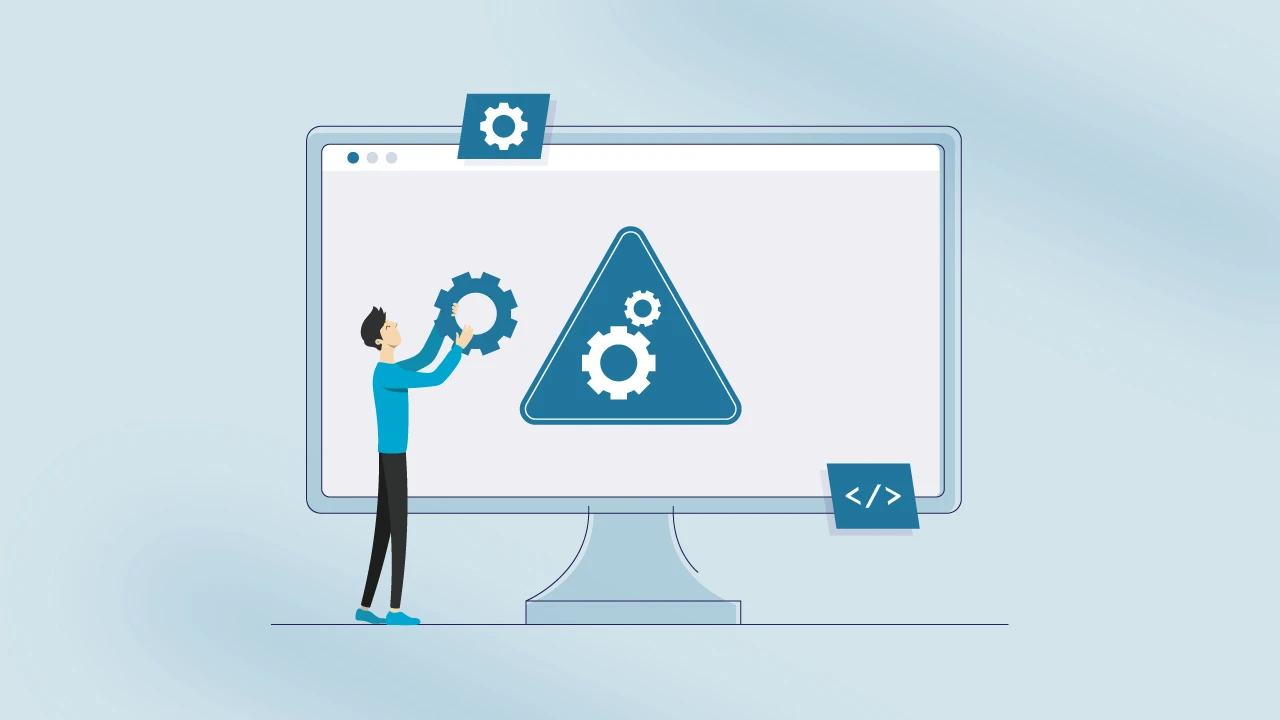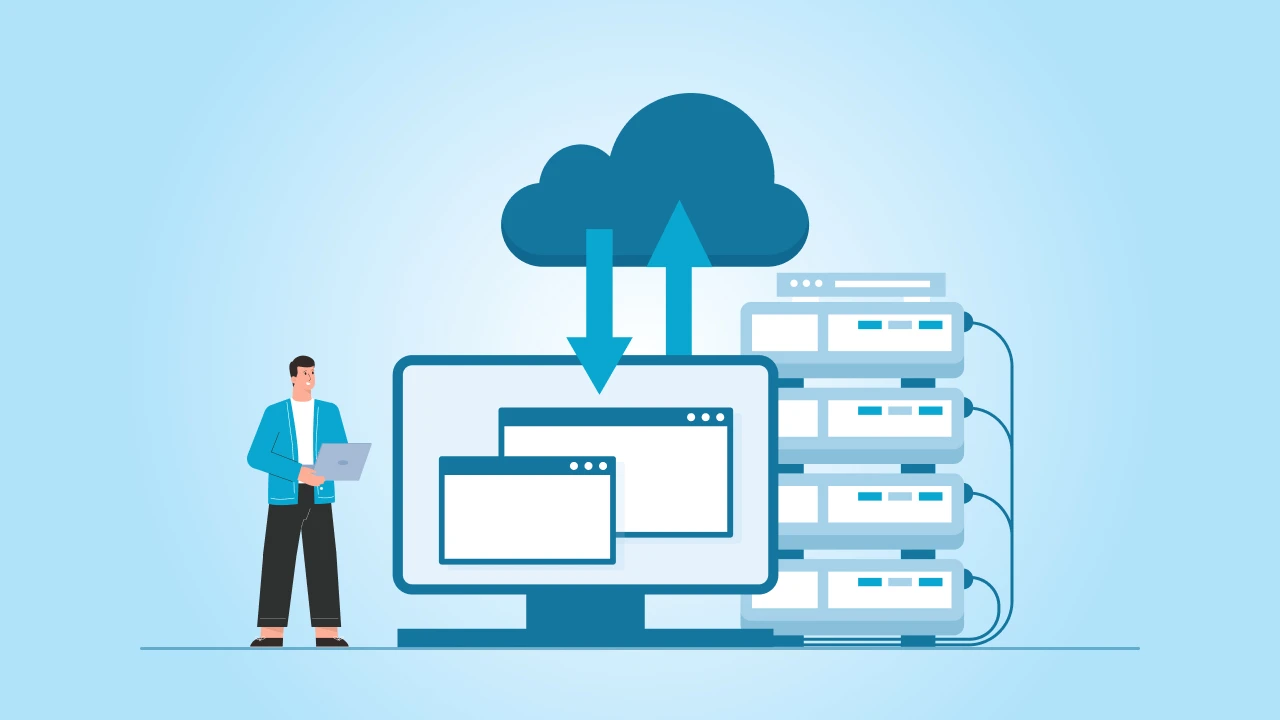How much does website maintenance cost?
This is one of the most popular questions asked in the web development industry. And if you’re looking for a simple answer, unfortunately, there isn’t one. The website maintenance cost depends on several factors: what type of website you have, how often it needs updates, and whether you choose to do it yourself or hire a Website development agency.
Think of it like owning a car. If you drive a Honda, you’ll likely spend less on maintenance compared to an Audi, which might require more expensive parts and services. Both need maintenance services, but the costs can vary greatly depending on the make and model. The same applies to websites.
A simple blog might need only minor updates here and there, while a complex eCommerce business site requires more frequent and detailed maintenance.
In this post, we’ll break down the different maintenance costs involved in keeping a website running smoothly and help you figure out whether it’s better to do it yourself or hire a Website professional.
⏰ 60-Second Summary
- Website maintenance pricing varies based on whether you choose professional help or handle it yourself.
- For personal websites, DIY maintenance is often sufficient and cost-effective, requiring minimal updates and security checks.
- A small business website may need more frequent updates and professional maintenance for security, backups, and performance.
- Using a website builder can simplify maintenance, but it still requires regular updates and security checks to keep your site running smoothly.
- Consider your budget, website complexity, and time availability to decide whether to go DIY or hire a Website development agency for ongoing website maintenance.
What is Website Maintenance?
Website maintenance is the process of regularly checking and updating your website to ensure it continues to function properly, stays secure, and provides a good user experience. Just like any other tool or system, a website needs consistent care to keep it running smoothly. This includes everything from minor tweaks to major updates and fixes.
What Does Website Maintenance Include?
- Software Updates: Keep your CMS (like WordPress), plugins, and themes up to date to fix bugs and protect against security threats.
- Security Checks: Regular scans, strong passwords, and firewalls help protect your site from malware and hackers.
- Backups: Routine backups ensure your site can be restored quickly in case of data loss or errors.
- Content Updates: Refreshing blogs, products, and pages keeps your website accurate, engaging, and SEO-friendly.
Why is Regular Maintenance Necessary?
Neglecting website maintenance can have serious consequences. Here’s what might happen if you don’t keep up with regular updates and checks:
- Security Risks: Outdated software or security features leave your site vulnerable to cyber-attacks. Hackers could steal sensitive customer information, damage your reputation, or take down your website entirely.
- Slow Performance: Over time, your website may become slower due to outdated code or unnecessary files. A slow website frustrates visitors and can lead to higher bounce rates, which affects your search engine rankings.
- Poor User Experience: Broken links, outdated content, and slow loading times all contribute to a poor user experience. Visitors are less likely to trust a website that looks neglected or isn’t functioning well, which can drive potential customers away.
Contact us today for a custom plan that fits your needs and keeps your website running smoothly.
Different Types of Website Maintenance
Basic Maintenance
These are the day-to-day tasks that are easy to handle and keep the website running smoothly. They include:
- Updating content (e.g., blog posts, images)
- Checking for broken links
- Running software updates (CMS, plugins, themes)
- Cleaning up unused files and databases
Advanced Maintenance
More complex tasks that require technical knowledge or professional help, such as:
- Conducting security audits to identify and fix vulnerabilities
- Troubleshooting errors and bugs
- Installing major updates or new features
- Optimizing website performance (speed, mobile optimization)
- Running SEO audits and improving site ranking
Both basic and advanced web maintenance are necessary for keeping a website safe, secure, and performing well. The type of maintenance needed depends on the complexity and scale of the website.
📖 Also Read: Comprehensive Guide to WordPress Maintenance Costs
Types of Website Maintenance Costs
Maintaining a website is not free. There are various maintenance costs or maintenance fees involved that are necessary to ensure your website stays functional, secure, and up to date. Some costs are ongoing, while others may be one-time expenses. Understanding these site maintenance costs is important to managing your website’s long-term success. Below are the common types of website maintenance costs:
1. Domain Name Costs
Your domain name is your website’s address on the internet (like www.yoursite.com). Domain names are typically registered annually, and the cost can vary depending on the extension (.com, .org, .net, etc.) and the domain registrar. On average, domain names cost between $10 and $50 per year.
- Domain Renewal: Be sure to renew your domain name each year to keep it active. Failure to do so can result in losing ownership of the domain.
- Domain Privacy Protection: Some domain registrars offer privacy protection to keep your personal information hidden from the public WHOIS database. This typically costs an extra $5 to $10 annually.
2. Web Hosting Costs
Web hosting is the service that stores your website files and makes them accessible to users on the internet. The cost of web hosting can vary depending on the type of hosting you choose:
- Shared Hosting: This is the most affordable option and typically costs between $3 and $10 per month. Your website shares server resources with others, making it a cost-effective choice for smaller websites.
- VPS Hosting (Virtual Private Server): VPS hosting offers more resources and control than shared hosting. It can range from $20 to $50 per month.
- Dedicated Hosting: This type of hosting gives you an entire server for your website. It’s the most expensive option, ranging from $70 to $200 per month, and is typically used by larger businesses or high-traffic websites.
- Cloud Hosting: A flexible option that can scale based on demand. Prices range from $15 to $100 per month or more, depending on your website’s needs.
3. SSL Certificate Costs
An SSL certificate is essential for securing the communication between your website and its visitors. It encrypts sensitive data (like credit card information) and assures users that your site is safe to browse.
- Free SSL Certificates: Many hosting providers offer free SSL certificates (such as Let’s Encrypt).
- Paid SSL Certificates: For added security or business validation, paid SSL certificates range from $50 to $200+ per year, depending on the level of encryption and verification required.
4. Software and Plugin Licenses
Most websites use content management systems (CMS) like WordPress, which require themes, plugins, and add-ons to enhance functionality. While many plugins are free, others may require a license or subscription.
- Premium Plugins/Themes: These can cost anywhere from $30 to $100 per year. Some plugins are one-time purchases, while others require ongoing subscriptions for updates and support.
- Software Licenses: Some websites may need specific software for features like e-commerce, membership areas, or booking systems. These software licenses can range from $50 to $500+ annually, depending on the complexity.
5. Security Software and Backup Services
Keeping your website secure and ensuring it is backed up regularly are essential aspects of maintenance. The cost for these services can range from $5 to $50+ per month, depending on the tools and storage needed.
- Security Plugins/Services: Services like firewalls, malware scanners, and security audits protect your website from cyber threats. Basic security plugins might be free, but more advanced options often cost between $20 to $100 per year.
- Backup Services: Regular backups ensure you don’t lose your data in case of an emergency. Some web hosting plans include backup services, but standalone backup solutions range from $5 to $50 per month.
6. Content Updates and Optimization Tools
Maintaining fresh, relevant content is vital for search engine optimization and user engagement. The costs here depend on how often you need to update content and whether you use any premium tools for optimization.
- SEO Tools: Tools like SEMrush or Ahrefs, which help with keyword research and SEO performance tracking, often require a subscription. Prices range from $99 to $200+ per month.
- Content Creation/Updates: If you hire professionals to create or update content, such as blog posts or product descriptions, costs can vary widely depending on the frequency and type of content (e.g., $50 to $500 per article).
7. Design and Development Costs
Websites often need design updates or development work to keep up with changing trends or business needs. This could involve redesigning parts of the website, adding new features, or fixing bugs.
- Design Updates or Redesigns: A website redesign can be a significant investment. Depending on the complexity, it could cost anywhere from $500 to $5,000 or more for a complete overhaul.
- Development Work: Custom development or adding new functionality, such as an online store or a booking system, may require hiring developers. This can cost between $50 to $150 per hour, depending on the complexity of the work.
Cost of Hiring a Professional for Website Maintenance
When it comes to web maintenance, one option is to hire a professional to handle all or some of the ongoing tasks. This can be a smart choice for business owners who want to ensure their website stays secure, performs well, and is updated regularly without having to spend time on technical tasks. But like anything else, hiring a professional comes with costs, and it’s important to understand what you’re paying for, how much it will cost, and when it makes sense to choose a professional over a DIY approach.
Hourly vs. Monthly Fees
When you hire a professional for website maintenance services, there are two common pricing structures: hourly rates and monthly website maintenance costs. Both have their own pros and cons depending on your website’s needs.
Hourly Rates:
- Cost Range: Professionals typically charge hourly rates ranging from $50 to $150 per hour, depending on their level of expertise and geographic location.
- Scope of Work: Hourly rates are often used for one-off tasks or specific projects (like fixing a bug, troubleshooting, or implementing a new feature).
- Flexibility: With hourly rates, you’re only paying for the time spent on your website. If you don’t need frequent updates or complex changes, this can be a cost-effective way to maintain your site on an as-needed basis.
Monthly Maintenance Contracts:
- Cost Range: Monthly maintenance contracts typically start at $100 to $500 per month for routine maintenance, but could go up to $1,000+ per month for more comprehensive services.
- Scope of Work: These contracts usually cover tasks like regular software updates, security checks, backups, and performance monitoring. Monthly fees can be predictable and manageable, especially for businesses that need ongoing support.
- Inclusion of Services: Depending on the package, services might also include technical troubleshooting, SEO optimization, or content updates.
Service Scope: What’s Included in Professional Web Maintenance
A professional typically provides several essential services to ensure your website runs smoothly and securely:
- Regular Updates: Keeping your CMS, plugins, and themes up to date to prevent security issues.
- Security Patches & Audits: Regular checks and updates to keep your website secure and free from malware.
- Technical Troubleshooting & Fixes: Handling any website errors, broken links, or speed issues.
- Backups & Data Recovery: Regular backups ensure you can restore your site if anything goes wrong.
- Performance Monitoring & Optimization: Monitoring site speed and performance, and optimizing it to enhance user experience.
- Additional Services: Professionals can provide advanced services like custom development, SEO optimization, or marketing integrations.
Additional Website Maintenance Fees for Specific Tasks
Certain tasks or larger projects may incur additional fees:
- Custom Development: Adding features like an online store or custom integrations could cost $500–$5,000+.
- Advanced SEO Services: For ongoing SEO, expect to pay $500–$2,000 per month.
- Redesign or Major Updates: A major redesign could cost anywhere from $1,000 to $10,000+, depending on the scope.
Cost of Going DIY for Website Maintenance
For smaller websites or those on a tight budget, going the DIY route can be an appealing option. DIY maintenance lets you avoid professional fees while still keeping your site secure and functioning. However, it comes with its own set of costs, both in terms of time and tools.
Initial Setup Costs
DIY Tools and Software:
- Free Plugins and Tools: If your website is built on platforms like WordPress, there are many free plugins for tasks like backups (e.g., UpdraftPlus), security (e.g., Wordfence), and performance optimization.
- Free SSL Certificates: Providers like Let’s Encrypt offer free SSL certificates to secure your website.
- Backup Tools: Free options like UpdraftPlus or BackWPup are great for basic backups.
- Security Plugins: Free tools like Wordfence help protect against malware and security breaches.
Learning Curve:
Even with free tools, there’s a learning curve involved in DIY maintenance. You’ll need to invest time in understanding how to update software, run security scans, and troubleshoot issues. This learning process could take hours or even days if you’re unfamiliar with web development or technical tasks. For non-tech-savvy website owners, this is often a hidden cost.
Ongoing Maintenance Costs
While the initial tools may be free, ongoing DIY maintenance still involves time and sometimes additional costs.
Time Investment:
The biggest cost of DIY maintenance is the time required. A small website may take just a few hours per month to maintain, but larger websites or e-commerce sites require more frequent updates and more complex tasks. DIY maintenance can quickly become time-consuming, especially if you’re managing backups, updates, and security manually.
DIY Tools and Services:
- Security Plugins: Free tools like Wordfence are fine for small websites, but you might need a premium version for larger sites. Expect to pay $50–$200 annually.
- Backup Solutions: While free, some backup plugins lack features like automatic backups or cloud storage. Premium options can cost $40–$100 per year.
- Web Hosting: Shared hosting costs are generally $3–$10 per month, but if your site grows, you may need VPS or dedicated hosting, which ranges from $20 to $100+ per month.
- SEO Tools: As your website grows, you might need to invest in premium SEO tools like Ahrefs or SEMrush, which can range from $99 to $400 per month.
Free vs. Paid Options:
Many tools are free, but as your site grows, you may need to upgrade to premium versions for added features:
Pro vs. DIY Website Maintenance Benefits
| Benefit | Pro | DIY |
|---|---|---|
| Cost Savings | Higher cost due to professional fees, but may save money in the long run through proper management. | Lower ongoing costs as you handle tasks yourself, but could lead to hidden costs due to mistakes or time spent learning. |
| Full Control | Limited control as tasks are handled by professionals. | Full control over every aspect of the website, including updates and changes. |
| Expertise & Knowledge | High level of expertise ensures better handling of complex tasks and security threats. | Requires learning and expertise, which can take time and effort, especially for complex issues. |
| Time Savings | Saves time by outsourcing technical tasks and focusing on core business activities. | Time-consuming as you handle every aspect of the website maintenance on your own. |
| Long-Term Security | Professionals ensure long-term security and stability of the website. | DIY may have security risks if not managed properly, and long-term stability can be affected by your skills and knowledge. |
| Scalability | Scalable maintenance as the business grows; professionals adapt and manage new needs. | DIY can work well for small websites, but scalability may be limited without external help. |
| Flexibility | Less flexible as you depend on professionals’ availability and schedules. | Highly flexible as you can make changes and updates on your own schedule. |
When Should You Hire a Professional?
There are certain scenarios where hiring a professional makes more sense than going DIY:
- Complex Websites or Businesses: If your website handles sensitive customer data, gets a lot of traffic, or needs strong security, a professional can offer customized website maintenance packages to keep it running smoothly and safely.
- Limited Technical Knowledge: If you’re not confident handling updates, fixing bugs, or securing your site, it’s best to rely on someone with the skills and experience. With professional tech support, you won’t need to worry about technical issues slowing you down.
- Long-Term Growth: Planning to grow your business? A professional can ensure your website evolves with you, scaling smoothly without affecting performance or user experience.
When Can You Go DIY?
Although going DIY may not be the right choice for every website, there are certain scenarios where it makes a lot of sense.
- Simple Websites or Blogs: If you run a personal blog, portfolio, or basic informational site, DIY can be a practical and budget-friendly option. These sites usually need only regular website maintenance, like occasional updates and content changes, which can be handled with free tools and a bit of time.
- Small Businesses or Personal Sites: If your website doesn’t rely on e-commerce or complex features, and you’re open to learning, you can manage it yourself. Posting blogs, updating content, and making small tweaks are manageable without outside help, keeping web maintenance costs low.
- Budget-Conscious Individuals: For those with limited funds but some free time, DIY maintenance helps avoid professional fees. It’s a good fit for people who want to stay hands-on while keeping their website functional and up to date.
Conclusion
Website maintenance costs vary depending on whether you choose to go DIY or hire a professional. DIY can save you money upfront, but it requires a time investment and technical know-how. You’ll need to manage everything from updates and backups to security checks yourself. Hiring a professional offers convenience, expertise, and peace of mind but comes with ongoing costs.
When deciding which option works best for you, consider the complexity of your website, the time you can dedicate, and your budget. If you have a simple site and time to learn, DIY is a great way to save money. For more complex websites or if you’d rather focus on other areas of your business, a professional can handle the maintenance efficiently.
Take some time to evaluate your specific needs and resources. If you’re unsure, consulting a professional for advice can help you make the best choice for the long-term health of your website.
We offer expert maintenance services tailored to your business. Get in touch today to see how we can support your online success!





